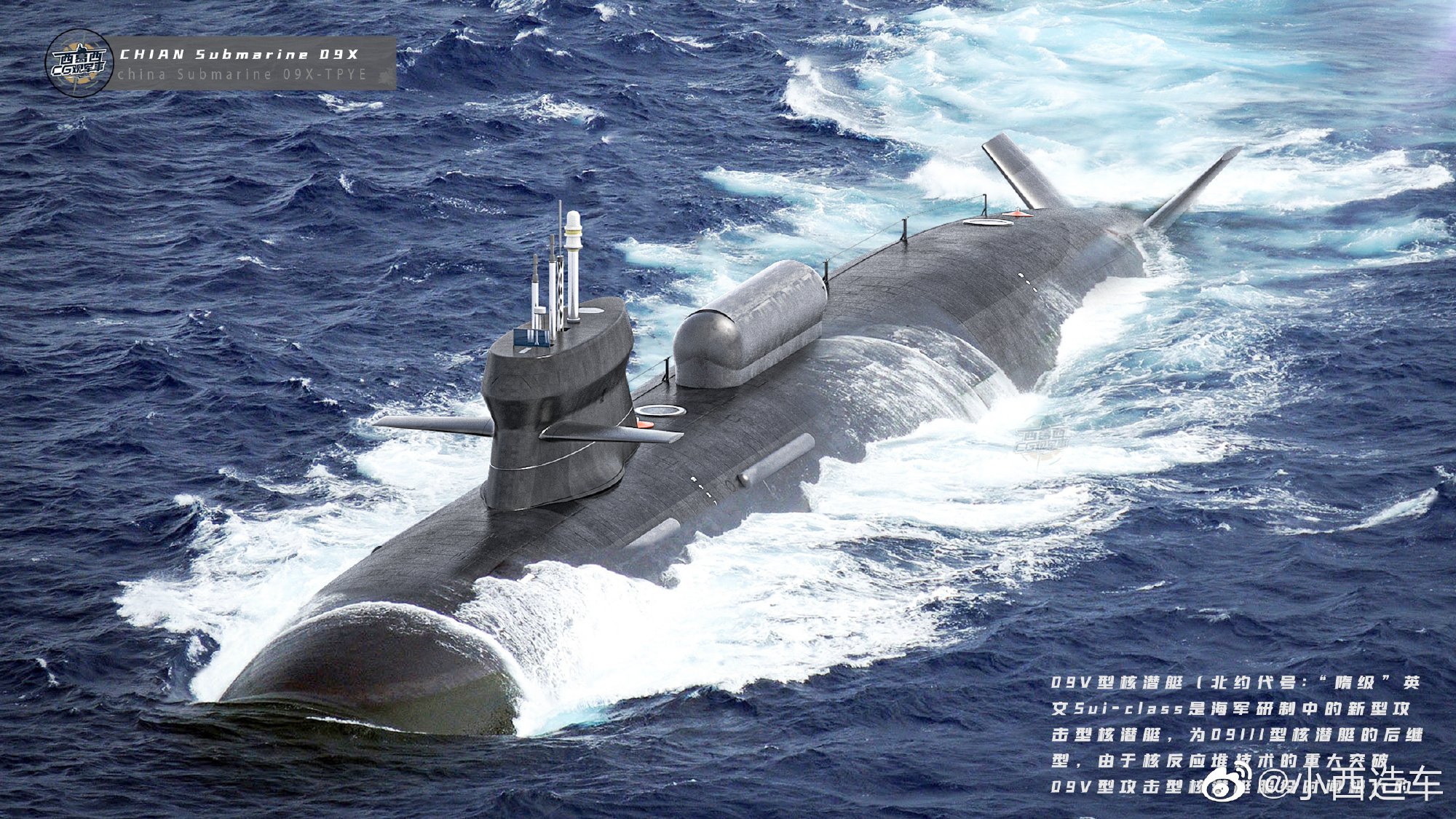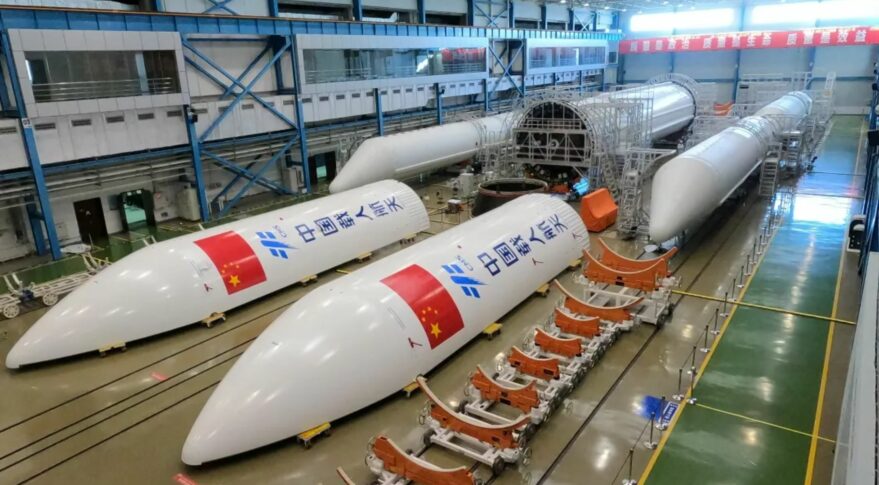In the last few decades, China has taken the world by surprise by claiming to have constructed the world’s largest structures, smashing world records in a range of fields, and enhancing the nation’s prestige and scientific achievements on global platforms.
From the world’s fastest missiles to trains, from artificial sun to artificial moon, from the world’s largest army to the country with most border disputes, Beijing appears to be taking the lead everywhere.
Now, in a bid to revolutionize aquaculture, China has launched the world’s biggest floating fish farm, capable of producing 3,700 tones of fish annually.
On Friday, the Guoxin 1 will set sail from the eastern port city of Qingdao outfitted with 15 tanks, each larger than two standard swimming pools, to set up the world’s largest mobile fish farm, reported South China Morning Post (SCMP).
The vessel was designed and constructed in collaboration between the Qingdao Conson Development Group, the China State Shipbuilding Corporation Limited (CSSC), the Pilot National Laboratory for Marine Science and Technology (Qingdao), and the Chinese Academy of Fishery Sciences.
Advantage Super Hornets: Is Boeing’s ‘Maverick Marketing’ Helping F-18 Jets Overcome Rafale Challenge For Indian Navy Deal?
The ship will harvest yellow croakers in the Yellow Sea, East China Sea, and South China Sea, with the first batch slated to reach the market in the fall of 2022.
According to state television CGTN, the gigantic vessel is 250 meters long (820 feet) and 45 meters (147 feet) wide and has a displacement of 130,000 tonnes. China claims that the ship is large enough to withstand typhoons.
Chen Zhixin, the chief scientist of the Chinese Academy of Fishery Sciences’ Fishery Machinery and Instrument Research Institute, told Xinhua that the new vessel would enable deep-sea aquaculture.
Dong Shaoguang, deputy general manager of the ship’s state-owned funder Qingdao Conson Development Group, told CGTN that the ship is outfitted with technology that permits a steady flow of seawater to be poured into the staterooms while maintaining environmental stability.
The ship, according to Dong, has a shorter aquaculture cycle than standard cages and can spawn three to five times more fish in the same amount of room. Guoxin 1 was launched from the shipyard in January 2022 and concluded her sea testing between April 30 & May 5.

It claims to have filed for more than 40 patents, including one international patent and has received more than ten design element approvals.
Beijing has plans to build a total of four ships of this kind. By March 2024, the Guoxin-2 and Guoxin-3 ships of the same model will be delivered. The Guoxin-4, an advanced version, is set to begin development in late 2023, reported CGTN.
In 2019, CSSC suggested a deep-sea aquaculture idea and a demonstration project. According to the company, the vessel set multiple records, including being the world’s largest aquaculture vessel, having the largest tanks, and having the largest aquaculture capacity.
Experts believe that the fish’s survival rate will enhance and accelerate their weight gain rate. Yellow croaker, Atlantic salmon, and grouper will be prioritized as “high-quality farmed fish.”
Record-Breaking Spree By China
A few days back, a Chinese research team claimed to have built the world’s first power plant capable of converting fusion energy into electricity without affecting the power grid.
When completed — roughly by 2035 — the China Fusion Engineering Test Reactor (CFETR) will generate a large amount of heat and have a maximum power output of up to 2 gigawatts.
Simultaneously, Chinese experts have claimed that commercial fusion power generation is expected to commence around 2050. However, the fusion power plant will require a special design with a large buffering zone to protect current energy infrastructures from these catastrophic shocks.
World’s Largest Antenna For Submarine Ops
China is said to be using the world’s largest antenna to strengthen its surveillance and communication capabilities, facilitating long-distance communications with submarines, according to SCMP.
The infrastructure was developed to enable underwater communications across a range of 3,000 kilometers. This distance is long enough to reach Guam, the US military’s largest outpost in the western Pacific. This has sparked fears that the Chinese military could be able to monitor US sites in the region.
Receiving devices installed on the seafloor at a depth of 700 feet can receive signals from the massive antenna 1,300 kilometers offshore. It is believed that China completed the construction of a massive experimental radio antenna on a plot of land nearly five times the size of New York City in 2019.

The antenna, which was built at a top-secret site, generates low-frequency transmissions that may be used to communicate with submarines, enabling the navy to function at greater depths without needing to resurface. The antenna is also placed in a 1,400-square-mile location.
In addition to interacting with submarines, the system can detect minerals and hydrocarbons and can be used as a seismic sensor to understand what happens on the surface before major earthquakes.
World’s Fastest Plane
China is also making great progress in the hypersonic race, providing stiff competition to Western countries. Beijing has made headlines recently for its tremendous advancements in hypersonic technology.
It had launched a hypersonic glide weapon system in July of last year, which purportedly went around the Earth in an unprecedented achievement accomplished by the Chinese.

With hypersonic technology, Beijing now hopes to transform air travel and lead the industry. China is also working on a hypersonic airplane that can transport ten passengers anywhere in the world in under an hour.
The 148-foot-long plane is around one-third the size of a Boeing 737 and has delta wings comparable to the world’s first supersonic airliner, Concorde.
Chinese scientists intend to develop a fleet of jets by the end of 2035. However, the specific function of the jets is still unknown. The plane will be able to travel at Mach 5, or more than five times the speed of sound.
Nuclear Reactor For Moon Expeditions
China is also making progress in major space-related programs. Last year, it was claimed that Chinese scientists are working on a formidable nuclear reactor for their moon and Mars missions that will be 100 times more powerful than the one NASA plans to install on the moon’s surface by 2030.
The new technology is part of a project supported by the Chinese government. The Asian powerhouse has yet to divulge the precise launch date or technical specifics for the new powerful reactor, which will generate one megawatt of electricity.
The country is, however, likely to experience a few difficulties.

Beijing has stated that the new nuclear space technology is so ambitious that the program may meet challenges as it nears its launch date. One of China’s space reactor’s main hurdles is cooling technology.
Just a fraction of the heat generated by the reactor would be used to create energy; the remainder would have to evaporate quickly in space to prevent a breakdown. To fix this, the reactor would use a foldable umbrella-like construction to increase the overall surface area of waste heat radiators.
China has been on a record-building spree, and the list is endless!
Beijing keeps claiming to have developed the world’s ‘biggest, fastest, highest’ projects with one eventual aim, i.e., to challenge the might of US dominance and emerge as a respected superpower.
- Contact the author at ashishmichel@gmail.com
- Follow EurAsian Times on Google News




